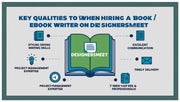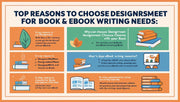Typography is one of the most fundamental elements of graphic design. It’s not just about choosing pretty fonts; typography affects readability, brand identity, and the overall user experience. Whether you’re designing a logo, website, poster, or brochure, understanding the importance of typography can elevate your work from ordinary to exceptional.
In this blog, we’ll explore why typography matters and how to use it effectively in your designs.
What is Typography?
Typography is the art and technique of arranging type—letters, numbers, and symbols—to make written language legible, readable, and visually appealing. It includes:
-
Font selection
-
Point size
-
Line length
-
Letter spacing (kerning)
-
Line spacing (leading)
Good typography enhances the message and mood of the design.
Keyword Highlight: typography in graphic design, font selection, typography basics
Why Typography is Important
-
Creates Visual Hierarchy
Typography guides the viewer’s eye through the content. By varying font sizes, weights, and styles, you can emphasize important information and make your layout easier to scan. -
Sets the Tone and Personality
Fonts convey emotions. A bold sans-serif font might feel modern and strong, while a cursive script font feels elegant and personal. Choosing the right typography reinforces the brand personality. -
Improves Readability and Accessibility
Clear typography ensures the message is easy to read on all devices and by all users, including those with visual impairments. Proper spacing and contrast are essential. -
Builds Brand Consistency
Consistent use of typography helps establish a brand’s identity. Most brands choose 2-3 complementary fonts to use across all marketing materials.
Keyword Highlight: typography importance, visual hierarchy, brand consistency
How to Choose the Right Fonts
When selecting fonts, consider:
-
Purpose: What is the design for? A formal report, casual blog, or playful flyer?
-
Readability: Choose fonts that are easy to read, especially for body text.
-
Pairing: Combine fonts that complement each other—typically one for headings and another for body text.
-
Licensing: Ensure you have the rights to use the fonts commercially.
Tools like Google Fonts offer a wide variety of free, web-safe fonts.
Keyword Highlight: choosing fonts, font pairing tips, readable typography
Common Typography Terms Every Designer Should Know
-
Serif: Fonts with small lines attached to the ends of letters (e.g., Times New Roman)
-
Sans-serif: Clean fonts without serifs (e.g., Helvetica)
-
Kerning: Space between individual letters
-
Leading: Space between lines of text
-
Tracking: Overall spacing across a block of text
Understanding these terms helps you make precise adjustments for better design.
Keyword Highlight: typography terms, serif vs sans-serif, kerning and leading
Typography Mistakes to Avoid
-
Using too many fonts in one design, which creates chaos
-
Poor contrast between text and background making reading difficult
-
Overly decorative fonts for body text
-
Ignoring mobile responsiveness for web typography
-
Not adjusting line spacing for better readability
Avoiding these common errors improves your design’s effectiveness.
Keyword Highlight: typography mistakes, design readability issues, font overuse
Tips for Effective Typography
-
Keep it simple: limit fonts to 2 or 3 per project
-
Use hierarchy to structure content clearly
-
Pay attention to spacing and alignment
-
Test your typography on different devices and screen sizes
-
Use web-safe fonts for digital projects
Good typography takes practice but significantly improves your design quality.
Keyword Highlight: effective typography tips, font hierarchy, responsive typography
Typography in Branding and Marketing
Typography is a critical part of brand identity. Think of iconic brands like Coca-Cola or Google—their font choices are instantly recognizable. When creating brand materials, consistent typography reinforces:
-
Brand recognition
-
Professionalism
-
Trustworthiness
Marketers also use typography strategically to influence buying behavior, such as bold fonts for calls to action.
Keyword Highlight: branding typography, marketing fonts, brand font consistency
Conclusion
The importance of typography in graphic design cannot be overstated. It’s the backbone of effective communication, helping your audience read, understand, and connect with your message. By mastering typography basics and applying best practices, designers can create visually stunning and user-friendly designs that truly stand out.
At DesignersMeet.com, we believe typography is a core skill for every designer. Practice regularly, experiment with fonts, and watch your designs transform!




